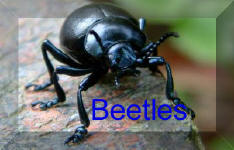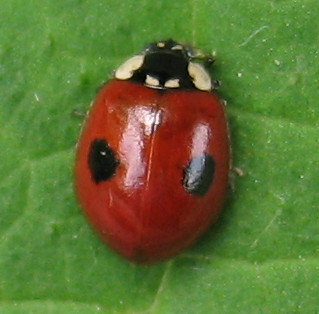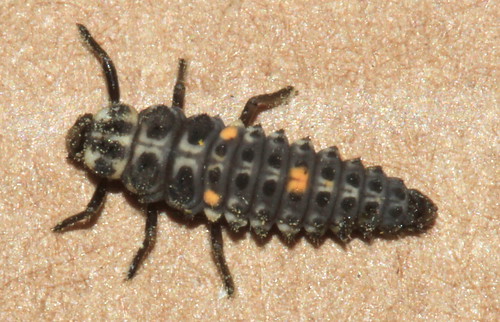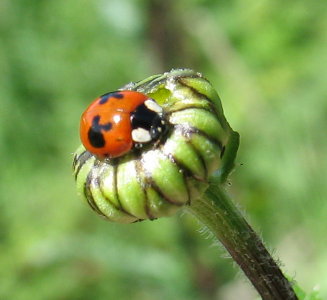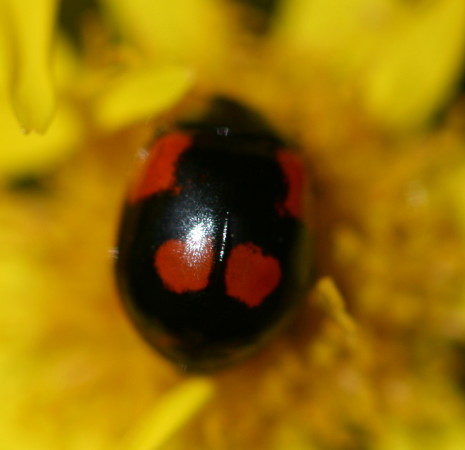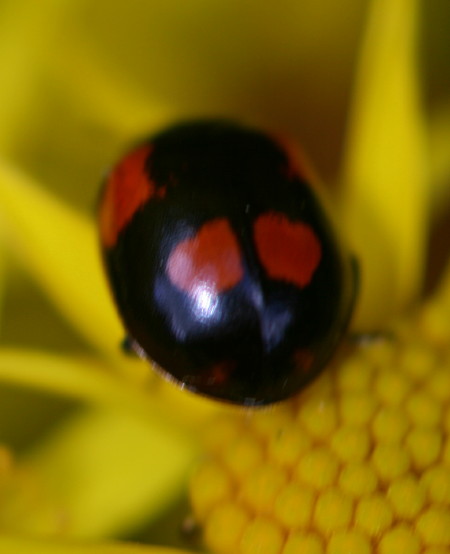Back To
....
Classification Order: Coleoptera Family: Coccinellidae - LadybirdsHome > Coleoptera >> Coccinellidae Ladybirds
Length . about 3 - 4 mm
Phenology
Active adults can be seen from March - November.Identification
The two-spot ladybird has with two main colour varieties.The common form has a red wing case with 2 round or angular black
spots The most familiar form of the two-spot ladybird beetle is the red one with the two black spots. However, there also exists a black form with red spots on it. In addition, there are intermediate forms, but they occur only rarely in nature. Often the pattern is reversed to give orange spots on a black background, especially in areas of industrial pollution, but always with a black underside which usually distinguishes it from the 10-spot ladybird. The larvae are elongate and grey, spotted with black and yellow. They hibernate, often with 10-spot ladybirds, in large aggregations in outhouses and under loose bark.
Life CycleThis carnivorous beetle is a voracious hunter of aphids and is often used in pest control. The females lay bright yellow eggsunderneath leaves and the larvae are also fierce predators of aphids. The adults overwinter by hibernating, often in groupsoften with 10-spot ladybirds, in large aggregations in outhouses and under loose bark. .
Habitat
Most leafy habitat supporting aphids - with sycamore often supprting aphid dews
